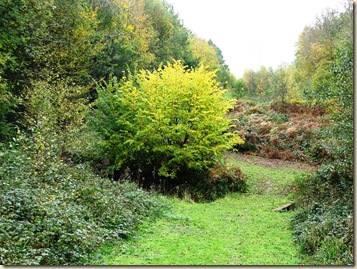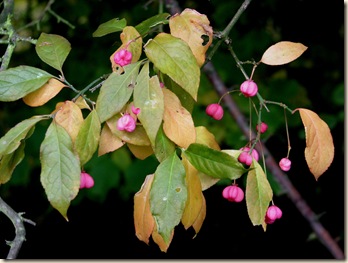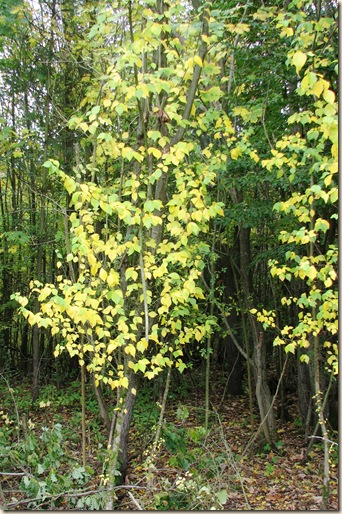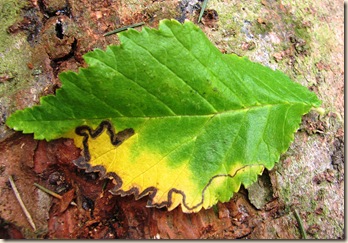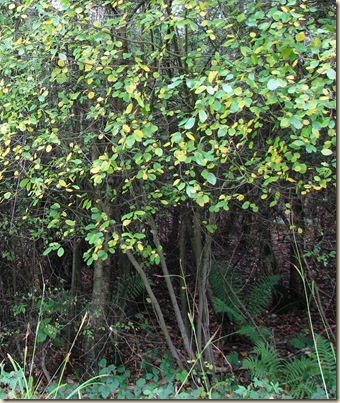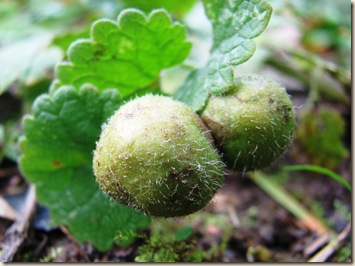Brede High Woods is at its autumn best after last week's frosts, but the leaves will soon come down if there are strong winds and heavy rain in the offing.
If you walk from Reservoir Lane (TQ806193) at the transmission lines northwards along Goatham Lane there are many spindle trees in the hedge, some fruiting quite well.
Opposite Lone Barn Farm there are several young elm trees with bright butter yellow autumn leaves. Without flowers and fruit (and even with them) elms are difficult to identify, but these seem quite plainly to be the Dutch elm (Ulmus x hollandica).
I suspect both these and the spindles were originally planted to make a more varied hedge.
On one of the elm leaves I found the larval mine of the red elm pigmy moth (Stigmella lemniscella).
There are a few records of this from West Sussex but only two very old ones from East Sussex, though it has probably been overlooked. It is widespread elsewhere in the southern part of Britain, though it is good to know it has found a place for itself in Brede High Woods.
Heading north from the Reservoir Lane corner along the transmission line path I found, between the second and third pylons a medium sized, multi-stemmed alder buckthorn (Frangula alnus) which I must have walked past hundreds of times without noticing.
It is the yellow leaves that make it stand out and autumn is a very good time to look for the less frequent trees and shrubs due to this added dimension.
